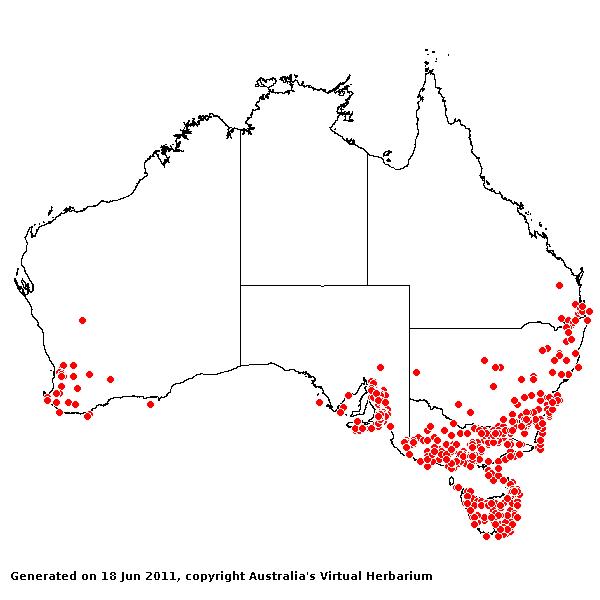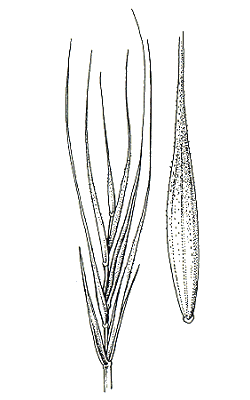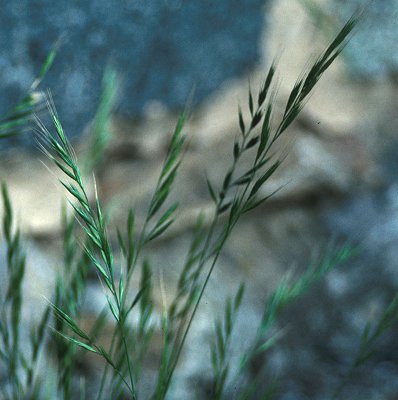Vulpia bromoides* (L.) S. F. Gray. Nat. Arr. Brit. Pl. 2: 124 (1821).
Classification. (GPWG 2001) : Subfamily Pooideae. Tribe Poeae.
Basionym and/or Replacement Name: Festuca bromoides L., Sp. Pl. 1: 75 (1753).
Type of Basionym or Protologue Information: LT: Herb. A. van Royen, (L-912, 356–219). LT designated by Stace & Jarvis, Bot. J. Linn. Soc. 91: 436 (1985).
Key references (books and floras): [1878] G.Bentham, Flora Australiensis 7 (663 as Festuca bromoides), [1952] C.A.Gardner, Flora of Western Australia 1 Gramineae (91), [2002] D.Sharp & B.K.Simon, AusGrass, Grasses of Australia, [2002] J.Wheeler, N.Marchant & M.Lewington, Flora of the South West (438), [2006] J.Jessop, G.R.M.Dashorst, F.M.James, Grasses of South Australia (170), [2008] S.W.L.Jacobs, R.D.B.Walley & D.J.B.Wheeler, Grasses of New South Wales (398), [2009] A.Wilson (ed.). Flora of Australia, Vol 44A. Poaceae 2 (293), [1992] J.R.Wheeler et al, Flora of the Kimberley Region (292, Fig.39).
Illustrations: [2006] J.Jessop, G.R.M.Dashorst, F.M.James, Grasses of South Australia (171, fig. 120), [2008] S.W.L.Jacobs, R.D.B.Whalley & D.J.B.Wheeler, Grasses of New South Wales, 4th edn (398), [2009]. A.Wilson (ed.), Flora of Australia 44A: Poaceae 2 (292, Fig 39).
Habit. Annual. Culms erect or decumbent, 2–60 cm tall. Leaf-sheaths smooth, glabrous on surface. Ligule an eciliate membrane, 0.2–0.5 mm long. Leaf-blades flat or involute, 1–18 cm long, 0.4–3 mm wide. Leaf-blade surface indumented.
Inflorescence. Inflorescence compound, a panicle of racemes. Panicle lanceolate or oblong, (0.5–)1.8–14 cm long.
Spikelets. Spikelets pedicelled. Fertile spikelets many flowered, with at least 2 fertile florets (3–10), comprising 3–10 fertile floret(s), with diminished florets at the apex, oblong or cuneate, laterally compressed, 7–14 mm long.
Glumes. Glumes similar, thinner than fertile lemma. Lower glume linear to lanceolate, membranous, without keels or keeled, 1 -nerved. Upper glume lanceolate, 4.3–10 mm long, membranous, without keels or keeled, 3 -nerved. Upper glume apex muticous or awned.
Florets. Fertile lemma 5.5–9.8 mm long, without keel, 5 -nerved. Lemma apex awned, 1 -awned. Median (principal) awn 5–12 mm long overall. Palea 2 -nerved. Palea apex divided to base. Anthers 1.
Continental Distribution: Europe, Africa, Temperate Asia, Australasia, Pacific, North America, South America, and Antarctica.
Australian Distribution: Western Australia, South Australia, Queensland, New South Wales, Victoria, Tasmania, Norfolk I, Lord Howe.
Western Australia: Drummond. South Australia: Nullabor, Flinders Ranges, Eyre Peninsula, Northern Lofty, Murray, Yorke Peninsula, Southern Lofty, Kangaroo Island, South-eastern. Queensland: Burnett, Darling Downs, Moreton. New South Wales: North Coast, Central Coast, South Coast, Central Tablelands, Southern Tablelands, North-Western Slopes, Central-Western Slopes, South-Western Slopes, North-Western Plains, South-Western Plains, North Far Western Plains. Victoria: East Gippsland, Eastern Highlands, Gippsland Highlands, Gippsland Plain, Grampians, Lowan Mallee, Midlands, Murray Mallee, Otway Plain, Otway Range, Wilsons Promontory, Riverina, Snowfields, Volcanic Plain, Wannon, Wimmera. Tasmania: King Island, Furneaux Group, North East, West Coast, Central Highlands, East Coast, South West.
Notes. Introduced. Native to much of Europe and N Africa. In disturbed sites, ranging from damp or wet areas to dry open habitats. Flowers Aug-Mar.(-May). Fruits Nov.-Apr.






